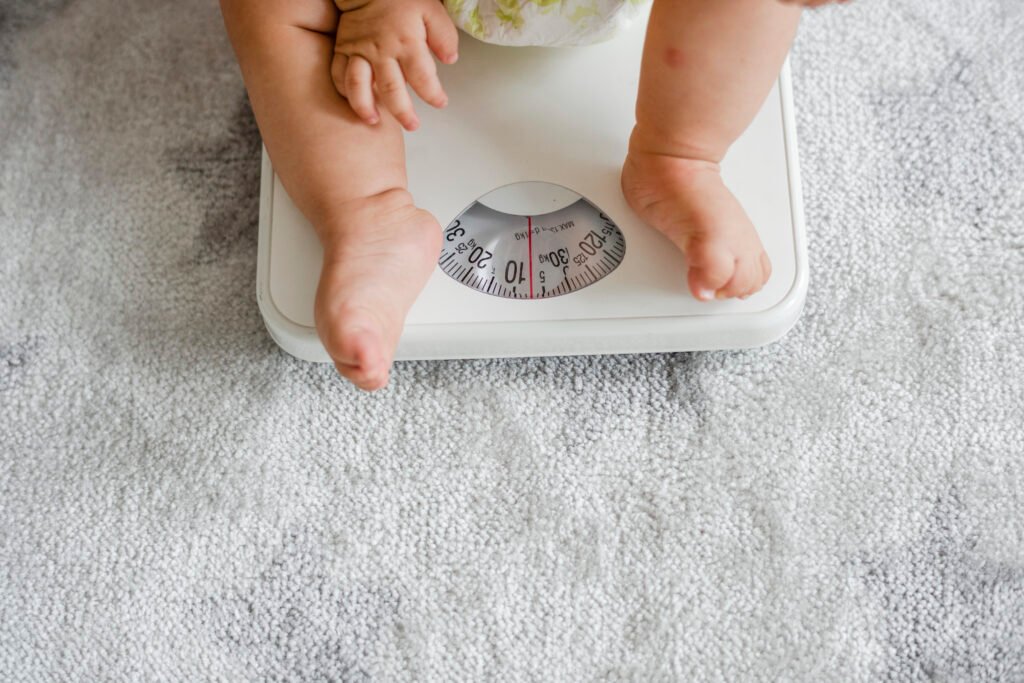
Gastritis, a term often associated with adults battling stomach discomfort, remains a silent concern in the realm of pediatric health.
While some triggers like alcohol consumption and smoking may not apply to children, the insidious nature of this condition finds its roots in stress, lifestyle choices, and dietary habits – factors that affect both adults and children alike.
The startling truth is that many parents overlook the subtle signs of gastritis in their children, mistaking them for common ailments or passing discomforts.
Yet, this oversight comes with grave consequences, as delayed diagnosis and treatment can exacerbate the condition, leading to prolonged suffering and complications.
In this revealing exploration, we will discuss gastritis as it affects children, shedding light on the signs that every vigilant parent should watch for.
We’ll also explore not only conventional treatments but also natural remedies, dietary adjustments, and the role of gastritis supplements in providing swift relief.
It’s time to equip parents with the knowledge needed to recognize, address, and conquer gastritis in their precious children.
How Do I Know If My Child Has Gastritis? (10 Common Symptoms To Look Out For)

- Abdominal Pain
Children with gastritis often experience persistent or recurrent stomach pain, commonly described as burning or gnawing.
- Nausea and Vomiting
Frequent episodes of nausea, sometimes culminating in vomiting, are indicative of gastritis.
- Loss of Appetite
Gastritis can lead to decreased interest in food or outright refusal to eat.
- Bloating
Children may complain of feeling bloated or excessively full, even after consuming small portions of food.
- Indigestion
Discomfort or a burning sensation in the upper abdomen, particularly after meals, is a common symptom.
- Presence of Blood
In severe cases, blood may be noticeable in vomit or stool, necessitating immediate medical attention.
- Fatigue
Gastritis-induced nutrient malabsorption can lead to generalized weakness or tiredness.
- Pale Skin
Anemia resulting from gastritis may manifest as paleness in the child’s complexion.
- Frequent Burping
Excessive burping, especially after meals, can be a symptom of gastritis.
- Unintentional Weight Loss
Gastritis-associated reduced appetite and nutrient absorption issues may lead to unintended weight loss in affected children.

What Are The Warning Signs Of Gastritis In Children?
Certain warning signs may indicate a more severe form of gastritis or potential complications.
These include:
- Severe or Persistent Symptoms: Symptoms that worsen over time or do not respond to conservative measures.
- Gastrointestinal Bleeding: Any indication of blood in vomit or stool necessitates immediate medical evaluation.
- Dysphagia: Difficulty swallowing or pain while swallowing warrants medical attention.
- Frequent Vomiting: Children experiencing frequent vomiting episodes may require medical intervention to prevent dehydration.
- Signs of Dehydration: Reduced urine output, dry mouth, or sunken eyes are indicative of dehydration and require prompt treatment.
- Tachycardia: A rapid heart rate may indicate significant dehydration and necessitates medical assessment.
- Fever: Elevated body temperature may signify an underlying infection or inflammation, requiring medical attention.

7 Causes of Gastritis in Children
Understanding the etiology of gastritis in children is crucial for appropriate management.
Common causes include:
- Infection: Gastritis can be caused by the Helicobacter pylori bacterium, prevalent in the stomach.
- Medication Usage: Prolonged use of nonsteroidal anti-inflammatory drugs (NSAIDs) or corticosteroids can induce gastritis.
- Dietary Factors: Consumption of spicy, acidic, or greasy foods, as well as irregular eating habits, may contribute to gastritis.
- Food Allergies: Allergies or intolerances, particularly to dairy or gluten, can trigger gastritis.
- Autoimmune Disorders: Conditions like autoimmune gastritis, wherein the immune system erroneously attacks the stomach lining, can lead to gastritis.
- Psychological Stress: Emotional stress or anxiety may exacerbate gastritis symptoms in susceptible individuals.
- Underlying Medical Conditions: Gastroesophageal reflux disease (GERD), Crohn’s disease, or bacterial infections can predispose children to gastritis.
Treatment of Gastritis in Children Using Gastritis Supplements
The management of gastritis in children typically involves a multifaceted approach, incorporating lifestyle modifications, dietary adjustments, and, in some cases, medication.
Gastritis supplements can play a supportive role in alleviating symptoms and facilitating the healing process.
Commonly used supplements include:
- Probiotics: Beneficial bacteria that restore gut flora and aid in digestion.
- Digestive Enzymes: Supplements that assist in the breakdown of food, facilitating nutrient absorption.
- Zinc Carnosine: A compound that promotes stomach lining integrity and reduces inflammation.
- Vitamin B12: Essential for nerve health and red blood cell production, particularly important in cases of gastritis-induced anemia.
- Deglycyrrhizinated Licorice (DGL): A form of licorice extract that soothes the stomach lining and reduces acidity.
- Slippery Elm: A herbal remedy known for its mucilage content, forming a protective layer in the stomach.
Some things you can do to help your child with gastritis include:
- Avoid Smoking Around Your Child
Secondhand smoke can exacerbate gastritis symptoms and may even contribute to its development.
Smoke contains numerous irritants that can inflame the stomach lining, worsening abdominal discomfort and other symptoms.
By ensuring a smoke-free environment for your child, you minimize their exposure to these harmful substances and create a healthier atmosphere conducive to healing.
- Help Your Child Relax with Activities like Yoga, Meditation, Listening to Music, or Mindful Activities

Stress and anxiety can exacerbate gastritis symptoms by increasing stomach acid production and disrupting digestion.
Engaging in relaxation techniques such as yoga, meditation, or listening to calming music can help alleviate stress and promote a sense of well-being.
Mindful activities, such as coloring or journaling, can also provide a healthy outlet for managing emotions and reducing tension, thereby supporting digestive health.
- Focus on Cooking and Eating More Homemade Meals with Minimally Processed and Whole Foods
Dietary habits play a significant role in managing gastritis. Processed foods, high in additives, preservatives, and artificial ingredients, can aggravate inflammation and digestive discomfort.
By prioritizing homemade meals made from fresh, whole ingredients, you provide your child with nourishing foods that are easier on the stomach and promote healing.
Incorporating a variety of fruits, vegetables, lean proteins, and whole grains into their diet ensures they receive essential nutrients while minimizing potential triggers for gastritis symptoms.
What Foods Help Heal Gastritis?
A carefully curated diet can significantly impact the management of gastritis in children. Foods that promote stomach healing and alleviate symptoms include:
- Oatmeal: Easily digestible and soothing to the stomach, oatmeal is a gentle option for gastritis sufferers.
- Yogurt: Rich in probiotics, yogurt supports gut health and aids in digestion.
- Ginger: Known for its anti-inflammatory properties, ginger can help alleviate nausea and reduce stomach inflammation.
- Bananas: Easily digestible and rich in potassium, bananas are gentle on the stomach and provide essential nutrients.
- Lean Protein Sources: Chicken, fish, and tofu are easier to digest than fatty meats and provide necessary protein for healing.
- Non-Acidic Vegetables: Vegetables like spinach, carrots, and sweet potatoes provide essential nutrients without exacerbating gastritis symptoms.
- Whole Grains: Brown rice, quinoa, and whole wheat bread are excellent sources of fiber and essential nutrients without irritating the stomach.
Where is Gastritis Pain Located for Children – Is it the Same as in Adults?
In children, gastritis pain typically manifests in the upper abdomen, near the center or slightly to the left.
While the location of pain is similar to that experienced by adults, children may have difficulty accurately describing their symptoms, necessitating careful observation and communication with healthcare providers.
Which Foods Make Gastritis Worse in Children?
Certain foods can exacerbate gastritis symptoms and should be limited or avoided, including:
- Spicy Foods: Spices can irritate the stomach lining and increase acid production, worsening gastritis symptoms.
- Citrus Fruits: High acidity in citrus fruits can aggravate gastritis symptoms and should be consumed in moderation.
- Tomato-Based Products: Tomato sauce, ketchup, and salsa are acidic and may trigger discomfort in children with gastritis.
- Fatty Foods: Fried foods, processed meats, and high-fat dairy products can exacerbate inflammation and discomfort.
- Carbonated Drinks: Soda and carbonated beverages can lead to bloating and gas, worsening gastritis symptoms.
- Caffeine: Coffee, tea, and chocolate stimulate acid production, potentially exacerbating gastritis symptoms.
- Alcohol: Alcoholic beverages increase stomach acid production and can lead to inflammation, aggravating gastritis symptoms.
Home Remedies for Gastritis in Children
In addition to dietary modifications and medication, several home remedies may provide relief from gastritis symptoms in children:
- Chamomile Tea: Chamomile possesses anti-inflammatory properties and can soothe the stomach lining.
- Aloe Vera Juice: Aloe vera has healing properties and can reduce inflammation in the stomach.
- Peppermint Oil: Peppermint oil aids digestion and can alleviate symptoms of indigestion and bloating.
- Honey: Honey coats the stomach lining, reducing irritation and providing relief from gastritis symptoms.
- Apple Cider Vinegar: When diluted in water, apple cider vinegar may help balance stomach acid levels.
- Licorice Root Tea: Licorice root contains compounds that soothe the stomach lining and reduce inflammation.
- Cold Compress: Applying a cold compress to the abdomen can reduce pain and inflammation associated with gastritis.
7-Day Diet Plan for a Child with Gastritis
A gentle, gastritis-friendly diet plan can aid in symptom management and promote healing in children.
Here’s a sample 7-day diet plan:
Day 1:
- Breakfast: Oatmeal with sliced bananas
- Lunch: Steamed chicken with rice
- Snack: Yogurt with honey
- Dinner: Baked fish with steamed vegetables
Day 2:
- Breakfast: Scrambled eggs with whole wheat toast
- Lunch: Vegetable soup
- Snack: Apple slices with almond butter
- Dinner: Grilled chicken salad
Day 3:
- Breakfast: Spinach, banana, and yogurt smoothie
- Lunch: Quinoa with roasted vegetables
- Snack: Greek yogurt with berries
- Dinner: Turkey meatballs with marinara sauce
Day 4:
- Breakfast: Cottage cheese with pineapple
- Lunch: Lentil soup
- Snack: Carrot sticks with hummus
- Dinner: Baked salmon with sweet potato
Day 5:
- Breakfast: Whole grain pancakes with berries
- Lunch: Turkey and avocado wrap
- Snack: Mixed nuts
- Dinner: Vegetable stir-fry with tofu
Day 6:
- Breakfast: Greek yogurt with granola and honey
- Lunch: Vegetable and bean chili
- Snack: Pear slices with cheese
- Dinner: Grilled shrimp with quinoa
Day 7:
- Breakfast: Muesli with almond milk
- Lunch: Vegetable and tofu stir-fry
- Snack: Cucumber slices with tzatziki
- Dinner: Baked chicken with brown rice
How Long Does Child Gastritis Last?
The duration of gastritis in children varies depending on several factors, including the underlying cause, severity of symptoms, and efficacy of treatment.
Acute gastritis may resolve within a few days to weeks with appropriate management, whereas chronic gastritis may necessitate long-term treatment and lifestyle modifications.
It is essential for caregivers to consult healthcare professionals for accurate diagnosis and tailored treatment plans to ensure the optimal management of gastritis in affected children.
In conclusion
Gastritis in children is a multifaceted condition that requires careful attention and management.
By understanding its symptoms, identifying potential causes, and implementing appropriate treatment strategies, caregivers can effectively support children affected by gastritis.
Additionally, dietary modifications, supplementation, and home remedies can play pivotal roles in alleviating symptoms and promoting healing.
With proper care and medical guidance, children with gastritis can experience relief and improved quality of life.












